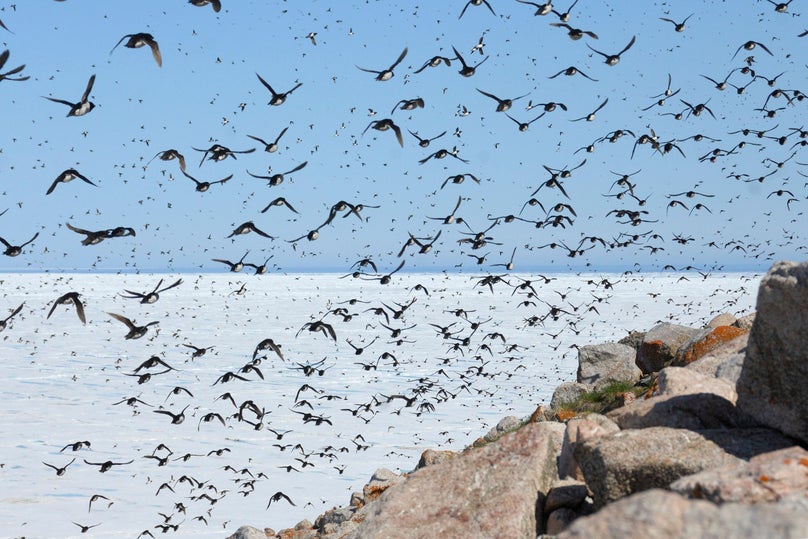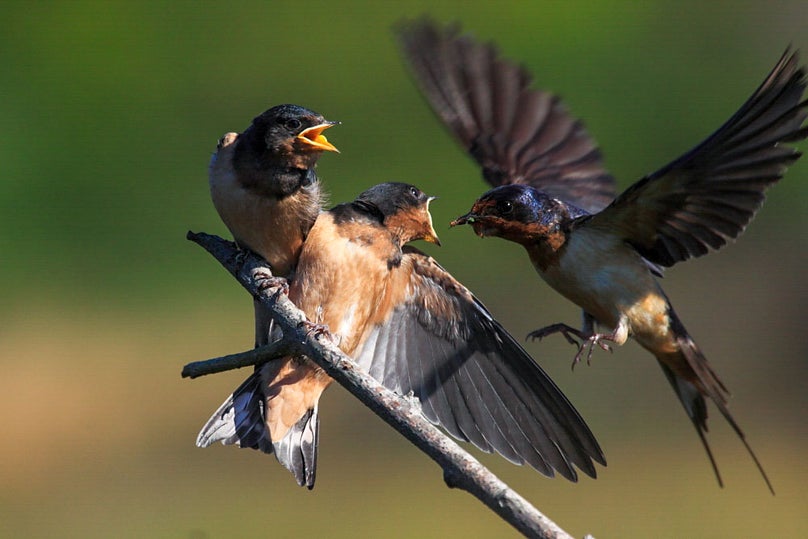Birds improve our quality of life. Watching them flit around a backyard feeder or hop through the grass can be an entertaining diversion, a mood booster, and a window into animal behavior. Observing our avian counterparts offers connection to nature and a reminder that we coexist with wildlife. And there’s more they do for us behind the scenes: We reap many benefits from sharing our planet with birds through what’s known as “ecosystem services.”
Ecosystem services include all of the positive benefits that natural systems provide. The term includes everything from the basic provisioning of food and oxygen, to more subtle perks such as the ways wetlands reduce storm and flood damage. Labeling these natural processes “services” makes it easier for ecologists and conservationists to quantify the value of nature (sometimes literally in dollars) as well as what we lose through environmental damage.
Birds make big contributions across habitats, and they’re crucial for people and the planet to thrive. When avian species are lost, their particular functions and benefits disappear, too. And introduced species can’t easily replace the critical roles of native ones, according to a new study published in Science Advances. That means holding onto the bird diversity we have is paramount.
You might already know about some of the ecosystem services birds provide, for instance pollinating your favorite fruits. Here are a few of the more surprising ways birds (metaphorically) keep the world turning.
Their poop is important fertilizer.

Bird droppings, also known as guano, play a key role in spreading nutrients, and seabirds are particularly crucial. After months of eating fish and other sea creatures on the high seas, they visit land to nest in large colonies of hundreds or thousands. When seabirds bring their full stomachs ashore and poop, they concentrate nutrients at their coastal breeding grounds in enormous volumes.
In northwest Greenland, for instance, Dovekies come to land en masse every summer to breed. In doing so, they move an estimated 3,500 tons of nitrogen, an important nutrient for plants from the ocean to the soil. All that nitrogen boosts local grass growth in the normally barren Arctic habitat and feeds grazers such as hares, geese, reindeer, and muskox, which are hunted by people for food. Where there are Dovekies, muskox numbers are 10 times higher.
At one point in human history, big deposits of bird guano were so valuable as fertilizer for crops that Spain started a war over them. The advent of synthetic fertilizers means bird poop is no longer fought over, but as in Greenland guano deposits still support many ecosystems and people.
Birds’ spore-spreading can keep entire forests healthy.
It’s well known that birds transport seeds. They munch on their favorite berries, and then distribute seed-strewn droppings—ensuring that new plants continue to sprout up. Recently scientists have found that some birds also have a penchant for foraging valuable fungi. In Patagonian forests, Chucao Tapaculos and Black-throated Huet-huets are voracious truffle-hunters. Whenever they dig up a fungus, eat it, and hop to the next one, they move spores around and propagate a diversity of tasty mushrooms.
This does more than multiply the birds’ food source: The truffles are actually the fruiting bodies of an intricate underground fungal network that keeps surrounding trees alive. The below-ground fungal filaments transport nutrients to the roots of trees in exchange for sugar.
The mutually beneficial partnership is the scaffolding that supports the whole forest system. Birds ensure it stays intact.
Birds are environmentally friendly exterminators.

What birds eat is often just as ecologically important as where they poop. For example, many birds are voracious predators of pests. Barn Swallows can consume as many as 60 insects an hour. Over an agricultural field, swallows rescue pest-prone crops and leave more food for us. And installing Barn Owl boxes on farms reduces populations of destructive rodents, like gophers. Similarly, putting up nest boxes for Western Bluebirds can save grapes on vineyards. In this way, promoting and protecting bird habitat is a great alternative to widely used, harmful pesticides.
Avian construction crews create habitat.
For birders, woodpeckers are doubly good news: a fine sight on their own, and home-builders for other cavity-nesting species. Research has shown that cavity-nesters—birds that build their homes inside tree hollows or other holes—do best when woodpeckers abound. In one recent Texas study, birds like titmice, flycatchers, and wrens were more likely to survive long-term if they built their nests in abandoned woodpecker cavities instead of those created by decay. Woodpecker-excavated holes afforded more access to tasty insects and offered better protection from predators.
Woodpeckers are so important for other species that monitoring them can tell scientists how the entire bird community is doing. They are environmental indicators: If woodpeckers are around, you can bet lots of other birds are, too.
They’re the ultimate in animal sanitation workers.

Vultures are the only vertebrate animals that eat carrion exclusively. (Other scavengers, like coyotes, also hunt for food.) Because vultures are so singularly focused, they’re remarkably efficient at picking up the scraps. Research has shown that when vulture populations fall, the number of rotting carcasses on a landscape goes up—by a factor of 10 in a South Carolina study. In one Kenyan study, scientists noted that without vultures, carcasses took three times the standard amount of time to decompose. More rotting stuff means a higher risk of disease for humans and other animals. Next time you go on a hike and don’t come across a dead deer, thank a vulture.
Some birds lend other species a leg (or wing) up.
If you’re still unconvinced that birds are here to help, consider that some directly assist other species—humans included. Greater Honeyguides live up to their name and range throughout sub-Saharan Africa: There, the brown-and-cream-colored birds, which eat bees’ wax and insect larvae, literally guide people to honey. In a well-documented quid pro quo, honey-hunting humans attract Greater Honeyguides through sound. (Different people around the continent have different communication cues they use to call honeyguides. The Yao community of Mozambique uses a distinctive trill. Hazda hunters in Tanzania rely on a whistle.) Then the birds lead them to hives.
It’s an example of true teamwork. Hunters help the birds because they can more easily take down and disassemble a hive than a lone bird can. And following honeyguides lowers the amount of time hunters spend searching and increases their chances of finding a hive.
It’s a striking example of a truth most avian enthusiasts already know: Birds make life a little sweeter.





